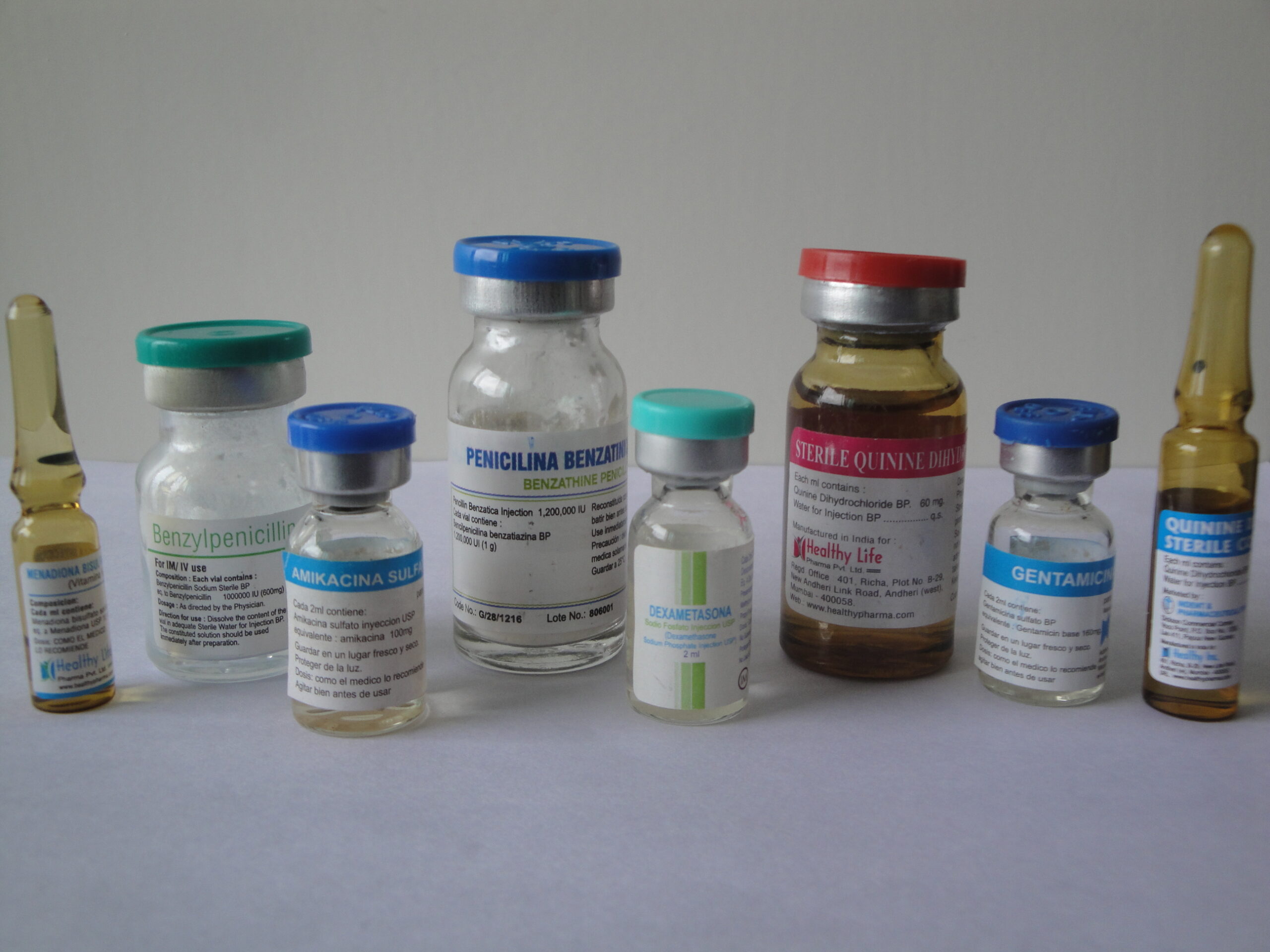Description
Haloperidol Injection
Haloperidol is a medication that belongs to the class of antipsychotic drugs. It is commonly used to treat various psychiatric disorders, including schizophrenia and acute psychotic episodes. Haloperidol is available in different formulations, including oral tablets, oral liquid, and injectable forms.
The term “Haloperidol injection I.P.” indicates that it is an intramuscular (I.M.) injection, and “I.P.” stands for “Indian Pharmacopoeia,” suggesting that the formulation adheres to the standards outlined in the Indian Pharmacopoeia.
Intramuscular injections of haloperidol are often used in emergency situations where rapid and reliable administration of the medication is required, such as in the treatment of severe agitation or acute psychotic episodes. It allows for a quicker onset of action compared to oral forms.
It’s important to note that the use of haloperidol and its dosage should be determined by a qualified healthcare professional based on the individual’s specific condition and needs. Like any medication, haloperidol may have potential side effects and contraindications, so it should be used under the supervision of a healthcare provider. If you have specific questions about haloperidol or its injection form, it is recommended to consult with a healthcare professional or pharmacist.
Haloperidol injection is typically used in specific situations and is administered by healthcare professionals. Here are some common usages of Haloperidol injection:
Acute Psychotic Episodes: Haloperidol injection is often used in emergency settings to manage acute psychotic episodes in conditions such as schizophrenia or bipolar disorder. It can help control severe agitation, hallucinations, and delusions.
Severe Agitation: In emergency situations where a patient is highly agitated, aggressive, or posing a danger to themselves or others, haloperidol injection may be administered to quickly calm and stabilize the individual.
Treatment of Delirium: Haloperidol injection can be used to manage symptoms of delirium, a state of acute confusion and disturbance in cognitive function often seen in medical conditions or during recovery from surgery.
Control of Nausea and Vomiting: Haloperidol has antiemetic properties, and its injection may be used to control severe nausea and vomiting, particularly in patients receiving chemotherapy or experiencing postoperative nausea.
It’s important to emphasize that haloperidol injection is generally used in acute and severe cases and is not typically the first choice for long-term treatment due to the risk of side effects associated with high doses. The dosage and frequency of administration will be determined by the prescribing healthcare professional based on the patient’s specific condition.
As with any medication, it’s crucial to follow the healthcare provider’s instructions, and patients should be monitored closely for any adverse effects. If you have questions or concerns about the usage of Haloperidol injection, it’s advisable to consult with a healthcare professional.
Haloperidol injection I.P. is typically used for several purposes, primarily in the management of psychiatric disorders and certain medical conditions. Here are some common usages:
Psychiatric Disorders: Haloperidol injection is commonly used in the treatment of various psychiatric disorders, including:
Schizophrenia: It helps in controlling symptoms such as hallucinations, delusions, and disorganized thinking.
Acute Psychotic Episodes: It can rapidly alleviate symptoms of acute agitation and aggression associated with psychotic episodes.
Agitation and Behavioral Disturbances: Haloperidol injection may be used to manage severe agitation or behavioral disturbances in patients with psychiatric disorders or medical conditions.
Nausea and Vomiting: In some cases, haloperidol injection may be used off-label to manage nausea and vomiting, particularly in palliative care settings or in patients who do not respond to conventional antiemetic medications.
Tourette Syndrome: It may be used to control tics and vocal utterances associated with Tourette syndrome, although other medications are often preferred for this purpose.
Hyperactivity and Aggression in Developmental Disorders: Haloperidol injection may be considered for managing severe hyperactivity and aggression in developmental disorders such as autism spectrum disorder, although its use in this population is less common and requires careful monitoring.
Severe Delirium: In certain medical settings, haloperidol injection may be used to manage severe delirium, particularly when symptoms pose a risk to the patient’s safety or interfere with medical treatment.
It’s important to note that the use of haloperidol injection should be determined by a qualified healthcare professional based on the individual’s specific condition and needs. The dosage and frequency of administration will vary depending on the indication, the severity of symptoms, and the patient’s response to treatment. As with any medication, haloperidol injection may have potential side effects and contraindications, so it should be used under the supervision of a healthcare provider.
Haloperidol injection, as with other forms of haloperidol, is primarily used to treat various psychiatric conditions. Here are some common usages of Haloperidol injection I.P.:
Acute Psychotic Episodes: Haloperidol injections are often used in emergency situations to quickly manage severe agitation, aggression, and acute psychotic episodes associated with conditions like schizophrenia or bipolar disorder.



